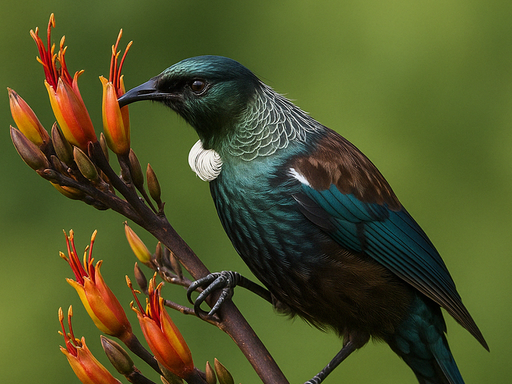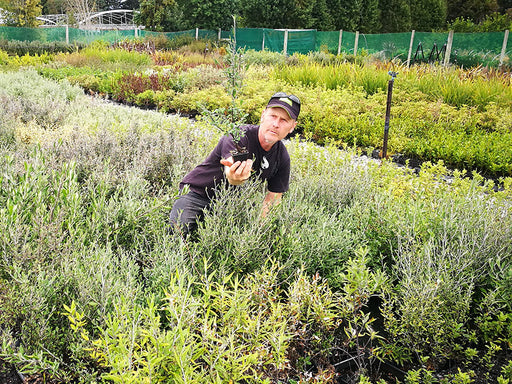Smart planting for Southland's unique climate and landscape
Southland, New Zealand’s southernmost region, offers gardeners a rich and diverse landscape—from wild coastal edges and fertile plains to damp bushlands and alpine foothills. With a cool temperate climate, regular rainfall, and exposure to strong winds and frosts in many areas, choosing the right native plants for Southland is the key to creating a thriving, resilient, and low-maintenance garden.
Native plants are naturally adapted to the region’s conditions, require less care once established, and support the local ecosystem by attracting birds, insects, and lizards. Whether you're planting in Invercargill, Te Anau, Gore, or the Catlins, this guide will help you choose the best natives to plant in Southland—and how to care for them.

Understanding Southland's Climate and Conditions
Southland experiences cool summers, cold winters, and high rainfall, particularly on the western side of the region. Inland areas often face frosts and heavier clay soils, while the coast is known for its salty air and strong winds. These variations make it essential to match your plant selection with your microclimate.
-
Coastal areas: Windy, often exposed to salt spray, with sandy or rocky soils.
-
Inland plains: Fertile but often heavy clay soils, with frost-prone winters.
-
Western and bush zones: High rainfall, shade, and moisture-rich soils.
-
Eastern and drier areas: Slightly lower rainfall, more drought-prone in summer.
Best Native Plants to Grow in Southland
Coastal Southland (Bluff, Riverton, Catlins)
Coastal gardens need plants that can handle salt, wind, and sandy or rocky soils. Tough, salt-tolerant natives are ideal for forming natural windbreaks, adding structure, and supporting wildlife.
Great choices include:
-
Coprosma repens – A hardy, glossy-leafed shrub that tolerates wind and salt.
-
Phormium tenax (Harakeke) – Iconic NZ flax, perfect for wind shelter and bold structure.
-
Austroderia richardii (South Island toetoe) – Tall, hardy grass ideal for exposed areas.
-
Cordyline australis (Cabbage tree) – A classic tree for coastal and inland areas alike.
-
Olearia solandri – A fast-growing shrub that doubles as a great coastal hedge.
Tips: Group plants together to create wind shelter. Use mulch to conserve soil moisture, especially in sandy conditions.

Central Plains (Invercargill, Gore, Winton)
This area features fertile but often heavy clay soils and frequent frosts. Choose natives that tolerate cold winters and establish well in dense, slow-draining soils.
Top native picks:
-
Pittosporum tenuifolium – A popular hedging or screening shrub that’s frost hardy.
-
Griselinia littoralis – Fast-growing and good for forming boundaries or privacy screens.
-
Hebe salicifolia – Attractive flowering shrub that brings colour and pollinators.
-
Carex secta – A native sedge ideal for wetter parts of the garden.
-
Leptospermum scoparium (Mānuka) – Hardy, flowering shrub that also supports bees.
Tips: Improve drainage in clay-heavy soil with compost or raised beds. Plant in spring or early autumn for best results.

Western Southland (Tuatapere, Te Anau, Fiordland Foothills)
With high rainfall, cooler temperatures, and rich soils, this part of Southland is perfect for moisture-loving bush natives and lush understorey planting.
Best plants for these conditions:
-
Plagianthus regius (Ribbonwood) – Fast-growing deciduous tree, great for riparian or garden planting.
-
Fuchsia excorticata (Tree fuchsia) – Supports native birds and thrives in damp areas.
-
Blechnum discolor (Crown fern) – A striking groundcover for shaded or bushy spots.
-
Podocarpus totara – A majestic native tree suited to larger areas and long-term planting.
-
Libocedrus bidwillii (Kawaka) – Elegant evergreen for structure and shelter.
Tips: These areas often require less irrigation, but good drainage is still important. Use thick mulch in bush-style gardens to replicate forest floor conditions.

Eastern and Inland Southland (Clinton, Mataura, Edendale)
These areas tend to be drier and more exposed to frost and wind. Drought-tolerant and hardy plants that can cope with extreme temperatures are ideal here.
Ideal native species:
-
Kunzea ericoides (Kānuka) – Fast-growing and hardy, good for shelter or rewilding.
-
Coprosma rugosa – Dense and colourful, perfect for hedging and bird habitat.
-
Poa cita (Silver tussock) – Hardy tussock that thrives in open, dry areas.
-
Phormium cookianum (Mountain flax) – Smaller than harakeke, and very cold-tolerant.
-
Olearia virgata – Great for wind shelter and dry slopes.
Tips: Use mulch to retain moisture in summer and suppress weeds. Plant in early autumn so roots can establish before dry weather.
Care and Maintenance Tips for Native Gardens in Southland
Once established, native plants require minimal intervention—but their first 12–18 months are critical. Here’s how to give them the best start:
-
Plant at the right time: Early autumn or spring planting avoids extreme cold or heat.
-
Mulch generously: Apply mulch around the base to retain moisture and suppress weeds.
-
Water deeply when young: Especially in drier or clay-based soils, deep watering encourages strong roots.
-
Control weeds early: Competing weeds can stunt native growth—keep areas clear while plants establish.
-
Prune for shape and health: Light pruning encourages bushier growth in shrubs like pittosporum or coprosma.
Final Thoughts: Planting with Purpose in Southland
Choosing the right native plants for Southland means working with nature rather than against it. By selecting plants suited to your local conditions—coastal, wetland, alpine, or inland—you’ll create a garden that is not only beautiful and low-maintenance but also helps protect the region’s unique biodiversity.
Native gardens attract birds like tūī, bellbird, and kererū, support insects and lizards, and connect us to the land we live on. Whether you're restoring a paddock, planting a lifestyle block, or building a backyard haven, there’s a native species ready to thrive in your landscape.
Plant smart. Plant native. Grow Southland strong.





